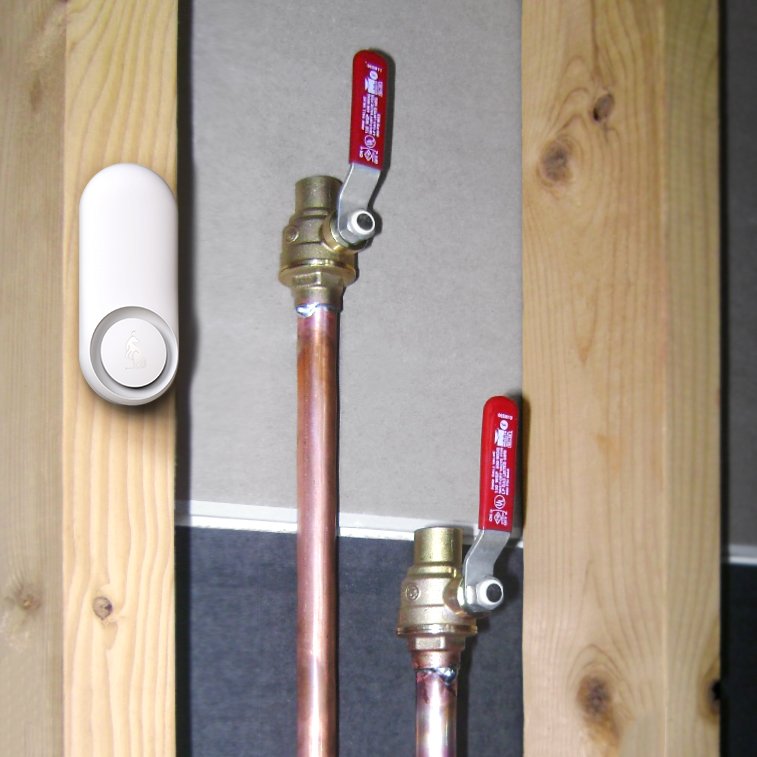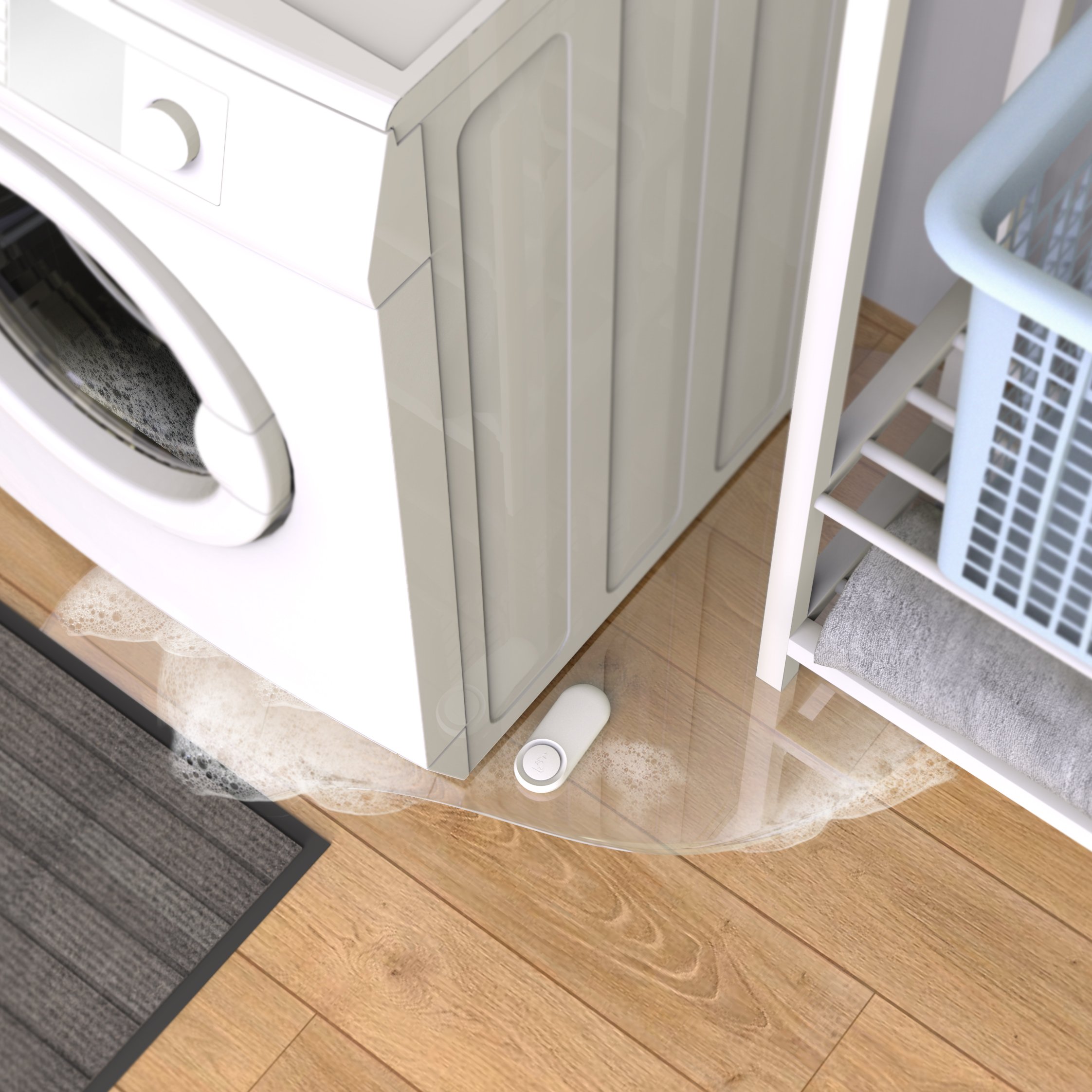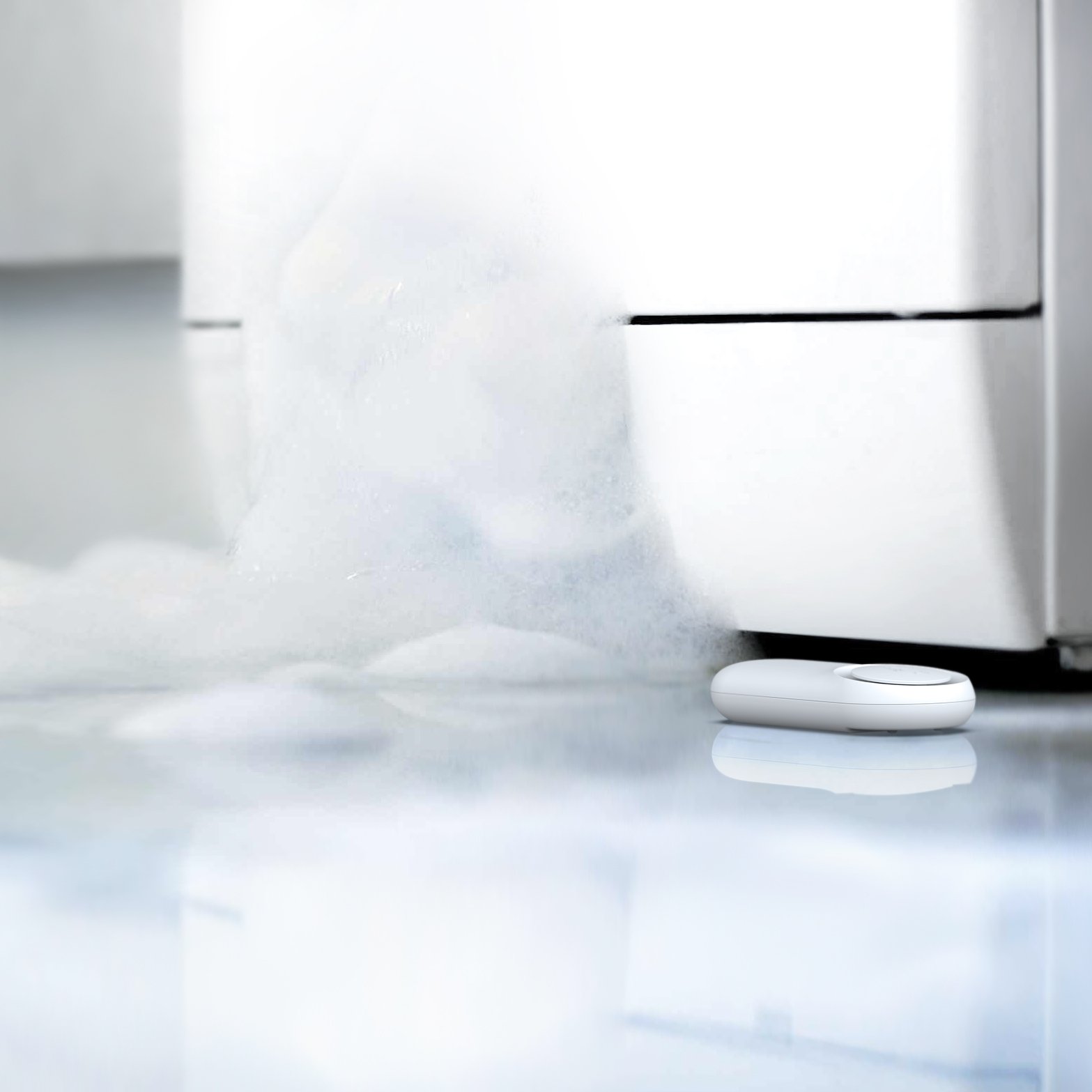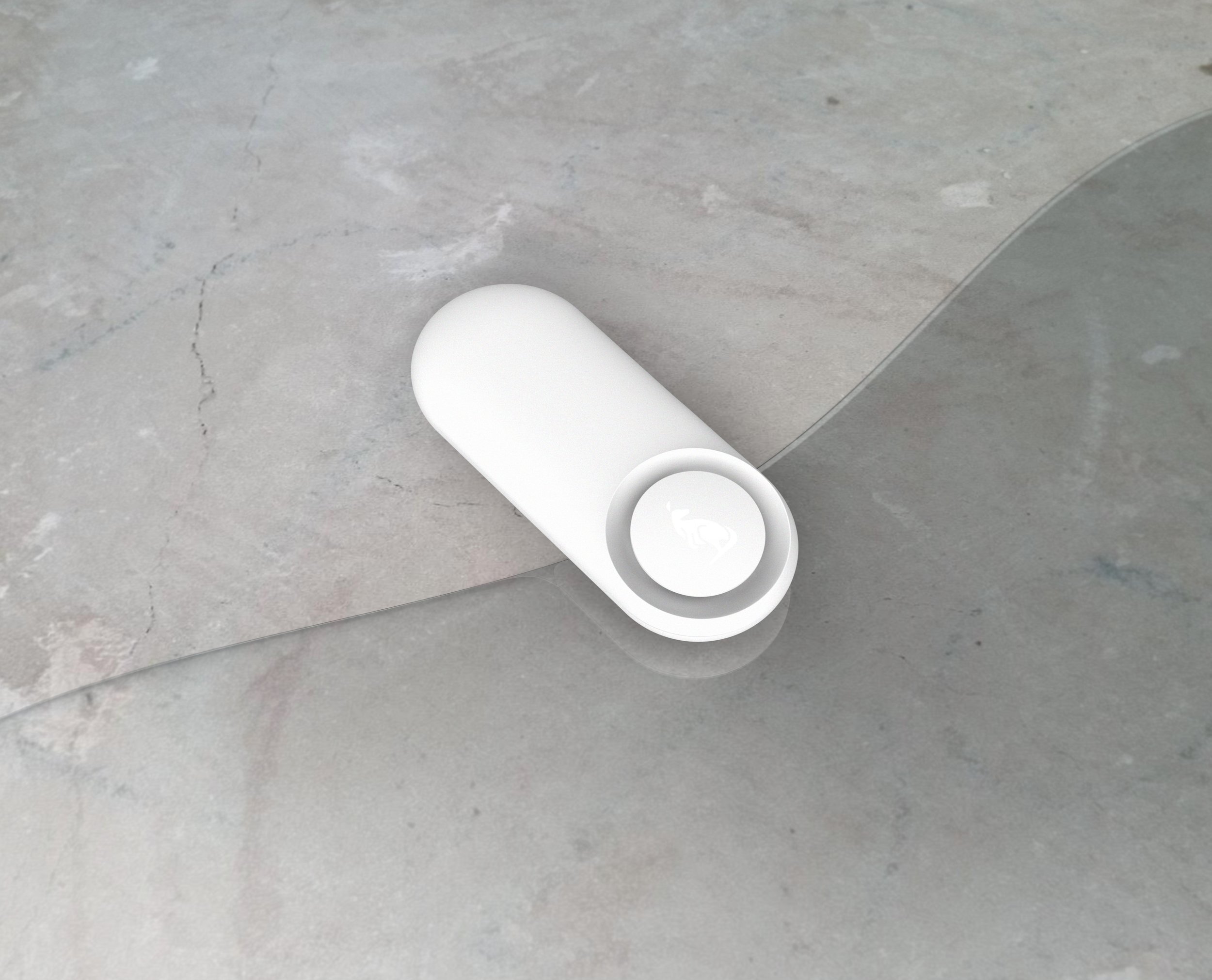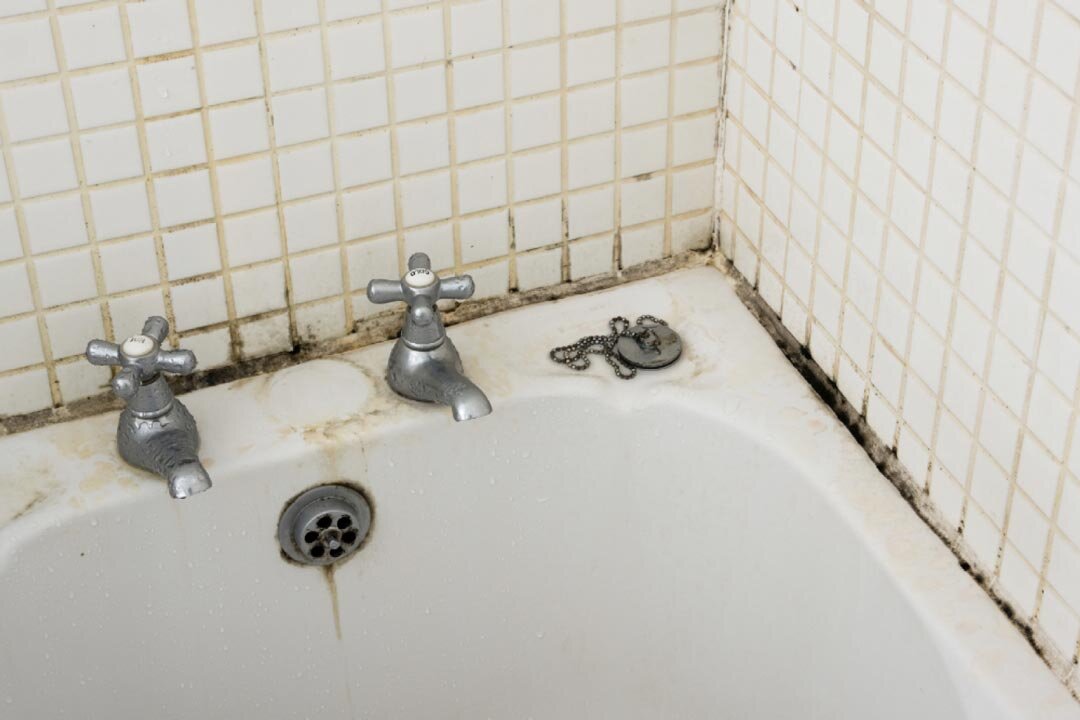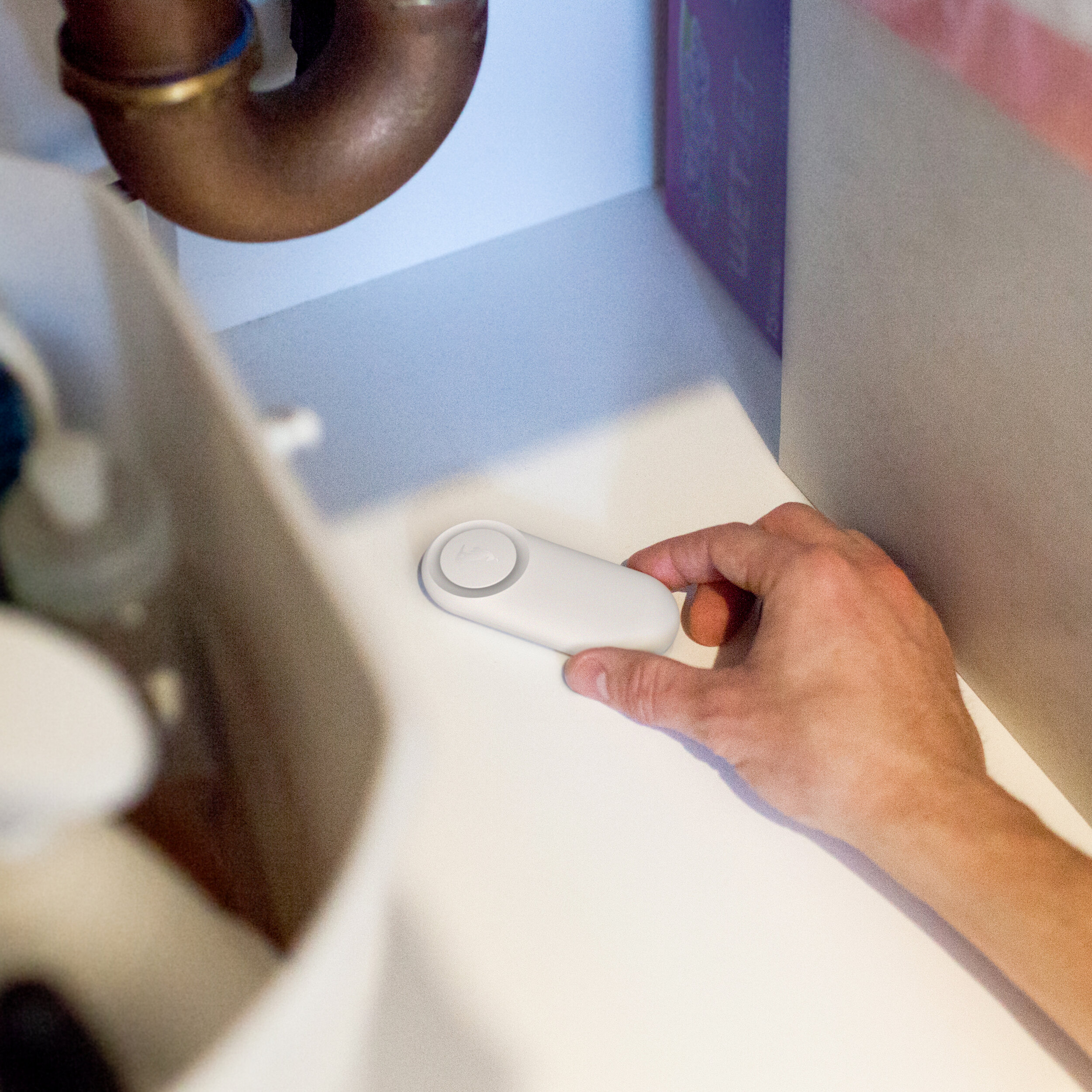Safeguard Your Home: Best Smart Water Leak Detectors and Sensors in 2025
Do you ever worry about hidden leaks, frozen pipes, or excessive humidity lurking in your home? Left unchecked, these seemingly minor issues can quickly escalate into costly repairs and even health risks. That's where the Kangaroo Water + Climate Sensor, one of the best smart water leak detectors on the market, comes in, offering a simple and effective solution for monitoring your home's critical water and climate conditions.
Are Water Leak Sensors Worth It?
Absolutely! Water leak sensors are an affordable and effective way to protect your home from water damage, which can be incredibly costly and disruptive. Even a small leak, left undetected, can lead to extensive damage to floors, walls, and belongings. Additionally, mold growth can pose serious health risks. According to FEMA, just 1 inch of water can cause $25,000 or more in damage. Between 2017- 2021, the average water damage claim was $12,514, with 1.61% of all US homes reporting damage.
Beyond Financial Costs, Water damage can also pose health risks due to potential mold growth. Early detection and mitigation through water sensors can help safeguard your health and well-being
Best Water Leak Detectors
Kangaroo Water + Climate Sensor (Price: $29.99):
Beyond Leaks: Detects not just leaks (as small as 1mm!) but also temperature and humidity changes. This allows you to proactively address issues like frozen pipes, mold growth, and excessive condensation before they cause damage.
Affordable Protection: Compared to competitors, the Kangaroo sensor offers comprehensive monitoring at a competitive price point.
Simple Setup and Use: No tools required! Just place it in your desired location and monitor your home through the user-friendly mobile app.
Instant Alerts: Get notified directly on your phone about leaks, extreme temperature changes, or concerning humidity levels, regardless of your location.
Peace of Mind: Gain valuable insights into your home's environment and take action to prevent issues before they turn into disasters.
1. SimpliSafe Water Sensor (Price: $24.99):
Pros: Slightly cheaper than Kangaroo, simple setup.
Cons: Only detects leaks, no temperature or humidity monitoring, fewer features.
2. Moen Smart Water Detector (Price: $49.99):
Pros: Detects leaks and temperature, optional smart valve integration.
Cons: Significantly more expensive than Kangaroo, lacks humidity monitoring, subscription required for some features.
3. Ring Flood & Freeze Sensor (Price: $34.99):
Pros: Detects leaks and temperature, integrates with Ring security system.
Cons: Lacks humidity monitoring, more expensive than Kangaroo, subscription required for some features.
4. Nest Protect Smoke + Carbon Monoxide Alarm (Price: $99.99):
Pros: Combines smoke and carbon monoxide detection with leak detection (requires optional purchase of Nest Detect).
Cons: Most expensive option, additional purchase needed for leak detection, limited temperature monitoring.
5. SmartThings Water Leak Sensor (Price: $34.99):
Pros: Integrates with SmartThings smart home system, detects leaks.
Cons: Lacks temperature and humidity monitoring, more expensive than Kangaroo, requires SmartThings hub.
Remember: Prices may vary depending on retailer and deals.
Types of Water Alarms:
When it comes to protecting your home from water damage, there are several types of alarms to choose from, each offering varying levels of sophistication and functionality. Here's a breakdown of the key options:
1. Basic Water Leak Detectors:
These are the most straightforward option, sounding an alarm or sending a notification when they come into contact with moisture. They are typically affordable and easy to set up, but lack features like remote monitoring or automated shut-off capabilities.
2. Smart Water Leak Detectors:
These integrate with your Wi-Fi network, sending real-time alerts directly to your smartphone or smart home hub. Some, like the Water Guard system compatible with HomeKit, go beyond basic notification by providing additional features like leak severity indicators or the ability to remotely shut off your water supply in case of a major leak. Kangaroo Water and Climate sensor is best for basements, high-humidity areas, or under a sink. It detects water, extreme changes in temperature, and humidity then sends an alert to your phone.
3. Combination Detectors:
These multi-purpose devices, like the Kangaroo Water + Climate Sensor, offer a broader range of monitoring capabilities beyond just water. They can not only detect leaks but also track the temperature and humidity in your home, giving you a more comprehensive understanding of your environment and potential issues.
4. In-Line Leak Detectors:
These advanced systems are typically installed by a plumber directly on your main water supply line. They offer the most precise monitoring, capable of detecting even the smallest leaks and tracking overall water usage. However, these come at a significantly higher price point compared to other options, including both the purchase and installation costs.
Where Are Leak Sensors Located?
Optimal Placement for Water Leak Sensors
The optimal location for your leak sensor depends on the type of sensor you have and the specific risks in your home. Here's a breakdown of common placements for different types of leak detectors:
Basic Leak Detectors:
Under sinks: This is a prime location as leaks often occur around pipes and connections here.
Around dishwashers and washing machines: Appliance hoses can deteriorate and develop leaks over time.
Near the water heater: Leaks from the water heater can cause significant damage, so early detection is crucial.
In basements and crawlspaces: These areas are susceptible to leaks due to potential flooding or foundation issues.
Smart Leak Detectors:
All the above locations: These sensors offer similar coverage to basic detectors in high-risk areas.
Near sump pumps: Smart detectors can monitor pump functionality and alert you to potential problems.
Around toilets: Toilets can overflow due to clogs or malfunctions, and smart sensors can help prevent water damage.
Near potential freezing zones: This includes areas with exposed pipes or exterior faucets, where freezing temperatures can cause bursts.
Combination Detectors:
These detectors combine leak detection with other functionalities like temperature or humidity monitoring. In addition to the placements mentioned above, consider:
Attics: Prone to humidity fluctuations and potential roof leaks.
Garages: Subject to temperature extremes and potential water intrusion.
Laundry rooms: Where washing machine hoses and connections might leak.
By strategically placing leak detectors in your home, you can gain valuable peace of mind and potentially prevent costly water damage.
Understanding Water Sensors: Function & Benefits
Water sensors play a vital role in protecting your home from water damage. But how exactly do they work, and what benefits do they offer?
Detection Mechanism:
Most alarm water sensors rely on probes or conductive pads to detect water. These probes or pads are designed to be highly conductive to electricity. When they come into contact with water, which is also conductive, it completes an electrical circuit. This completed circuit triggers the sensor, which then:
Emmits an audible alarm: This loud and distinct sound alerts you to a potential leak, prompting immediate action.
Sends an alert: In some models, the sensor might send an alert to your smartphone or smart home hub, notifying you remotely.
Benefits of Water Sensors:
Immediate Notification: Unlike hidden leaks that might go unnoticed for days, water sensors provide immediate notification the moment they detect water. This allows you to take swift action, potentially preventing significant damage.
Deterrence: The audible alarm from water sensors can also act as a deterrent, discouraging individuals from tampering with water sources or appliances, thus reducing the risk of accidental leaks.How can I monitor my home water usage?
Track Your Home's Water Usage
Several methods can help you monitor your home water usage:
Smart water meters: These meters track your water usage in real-time and can send alerts if you exceed normal levels, potentially indicating a leak.
App-based water monitoring systems: These systems connect to existing water meters and provide detailed usage data through smartphone apps.
Monitoring individual fixtures: Look for water-efficient appliances and devices with leak detection features. Regularly checking faucets and toilets for leaks is also crucial.What is the best method to check for leaks?
Identifying Hidden Leaks: Top Strategies
A combination of approaches is best:
1. Check your water meter: Most homes have a water meter installed by the water utility company. This device measures the volume of water flowing into your home. By taking regular readings (daily, weekly, or monthly) and comparing them, you can track your overall water consumption and identify any sudden increases that might indicate a leak.
2. Analyze your water bill: Your water bill typically includes information on the total water used during the billing period. This can be a helpful tool for tracking your overall consumption over time and identifying any trends. You can compare bills from different months to see if there are any significant changes in usage.
3. Utilize smart water monitoring devices: Several smart water monitoring devices are available on the market. These devices typically attach to your water supply line or specific fixtures (like washing machines) and track water usage in real-time. Some connect to your Wi-Fi network and send alerts to your smartphone app, allowing you to monitor your water use remotely and receive notifications of potential leaks.
4. Explore your water provider's options: Some water providers offer programs or online tools that allow you to view your water usage data online. This can be a convenient way to track your consumption and identify any areas where you might be able to conserve water.
5. Look for water-saving features: Many appliances and fixtures now come equipped with water-saving features. For example, low-flow shower heads, toilets, and washing machines can significantly reduce your water consumption without sacrificing performance. By choosing water-efficient appliances and adopting water-saving practices in your daily routine, you can naturally decrease your overall water usage.
Plumber's Leak Detection Tools
Professional plumbers have a variety of tools at their disposal for leak detection, including:
Acoustic listening devices: These tools, like ground microphones and listening discs, amplify the sound of running water, even through walls and floors, helping pinpoint the leak's location.
Thermal cameras: These cameras detect temperature differences, making hidden leaks visible by showing warmer or cooler areas where water is escaping.
Video inspection cameras: Tiny cameras mounted on flexible cables snake through pipes, providing a visual inspection of their interior condition and revealing leaks or damage.
Small Sensors, Big Savings
Imagine little guards watching for drips. When they find one, they send a message to your phone, like a "SOS!" This lets you shut off the water FAST, preventing a flood.
Why are they awesome?
Save money: Many insurance companies recognize the preventive power of water sensors and offer discounts of 5% to 15% on your premiums. So, by installing these affordable devices, you're not just protecting your home, you're potentially saving money on insurance too!
Less stress: No more worrying about leaks when you're on vacation. You'll know if anything happens right away!
Save your stuff: Catching leaks early means less damage to your furniture and floors. That saves you money too!
Kangaroo Water and Climate Sensor
Customer Reviews: Kangaroo Water + Climate Sensor
The Kangaroo Water + Climate Sensor has garnered positive feedback from users for its effectiveness, ease of use, and affordability. Here’s a summary of what customers are saying about this innovative device:
Pretty Neat!
"I was skeptical at first, but this device really works! I’d definitely use it in a basement to monitor water conditions. Plus, it’s a tiny, cute device!"
— Sierra, Walmart Verified PurchaseGreat Product
"This is a great product. It’s easy to use and perfect for traveling. It effectively detects both water and humidity, and the price is right."
— Melyna, Walmart Verified PurchaseMust Have!
"This is a must-have! I keep one in my basement and bought a second for a rental property. It provides extra protection and peace of mind."
— Shalia, Walmart Verified PurchaseEasy Set-Up and Use!
"I’ve only been using it for a few days, but it works well. It was very easy to set up, and I’m hopeful it will continue to perform. Definitely using it in the basement to prevent water damage."
— Sammi, Walmart Verified PurchaseGood to Keep You Informed
"This little product gives great peace of mind. It’s a fantastic idea for monitoring sump pumps and humidity levels in my basement. The setup was simple and it’s working well so far."
— Lexi, Walmart Verified Purchase
Beyond the Drip
Traditional water leak detectors sound an alarm or send a notification when they detect moisture. The Kangaroo sensor does that too, detecting leaks as small as 1mm, but it doesn't stop there. It also monitors temperature and humidity, providing a holistic picture of your home's environment. This allows you to:
Prevent frozen pipes: Freezing temperatures can burst pipes, leading to extensive flooding. The Kangaroo sensor lets you know before the damage occurs, allowing you to take preventative measures like adjusting the thermostat.
Combat mold growth: Excessive humidity creates a breeding ground for mold, which can pose health risks. The sensor alerts you to humidity spikes, prompting action like ventilation or dehumidification.
Monitor basements and crawlspaces: These areas are vulnerable to humidity and flooding. The Kangaroo sensor, designed for such environments, gives you peace of mind knowing you'll be notified of any issues.
Prevent frozen pipes: Freezing temperatures can burst pipes, leading to extensive flooding. The Kangaroo sensor lets you know before the damage occurs, allowing you to take preventative measures like adjusting the thermostat.
Combat mold growth: Excessive humidity creates a breeding ground for mold, which can pose health risks. The sensor alerts you to humidity spikes, prompting action like ventilation or dehumidification.
Monitor basements and crawlspaces: These areas are vulnerable to humidity and flooding. The Kangaroo sensor, designed for such environments, gives you peace of mind knowing you'll be notified of any issues.
Tailored for Vulnerable Areas
Unlike other water leak detectors, the Kangaroo sensor is specifically designed for basements, high-humidity areas, and under sinks – the places where leaks are most likely to occur. Its compact size and discreet design allow it to blend seamlessly into your environment, keeping watch without being an eyesore. Read More - 7 Most Common Places at Home for Water Leaks
More Than Just a Leak Detector
The Kangaroo sensor goes beyond simply detecting leaks. It also monitors temperature and humidity, providing a comprehensive picture of your home's climate. This allows you to proactively address potential issues like mold growth or frozen pipes before they become major problems. Read More - 6 Ways to Use Kangaroo Water + Climate Sensors
Instant Alerts to Your Phone
The sensor doesn't just beep and hope you hear it. Instead, it sends real-time alerts directly to your smartphone, notifying you of any water leaks, extreme temperature changes, or concerning humidity levels, no matter where you are. This allows you to take immediate action, potentially saving you from costly damage and ensuring your home's safety.
Simple Setup and Easy Monitoring
Setting up the Kangaroo sensor is a breeze – no tools required! Just place it on the floor or in your desired monitoring area, and you're good to go. The sensor even features a sleek, modern design that complements your home decor.


Water damage coverage
Water damage from a leak originating from inside the home in an area monitored by a Kangaroo Water + Climate Sensor will qualify for damage reimbursement with your protect plan.
Specs
Size: 3.93” x 1.65” x 0.7” (100mm xx 42mm x 18mm)
Weight: 2.59 oz (73.4g)
Color: White
Battery: 2 x AA batteries (included). Up to 1 year battery life
Operating temperature: 14°F (-10°C) to 140°F (60°C)
System Requirements
Wi-Fi 802.11 a/b/g/n, 2.4GHz (WEP, WPA, or WPA2 encryption) compatible router.
Mobile device with iOS 10.0 and above or Android 5.0 and above.
Active Internet and cellular connections are required on the mobile device.
Alarm monitoring service requires subscription.
For indoor use only.
Invest in Protection, Not Just Detection
Don't wait for a flood to wreak havoc on your home. By choosing a well-rounded water leak detector like the Kangaroo Water + Climate Sensor, you gain a reliable water sensor that goes beyond basic water detection. Remember, early detection and prevention are key to saving money and ensuring the well-being of your home. So, embrace proactive protection and choose the Kangaroo Water + Climate Sensor against water damage and environmental threats.
Water Sensors FAQs:
-
A smart water leak detector is a device that can detect water leaks and send alerts to your smartphone. Some models can even automatically shut off your water supply to prevent further damage.
-
The Kangaroo Water + Climate Sensor is a versatile smart home device that monitors water, temperature, and humidity levels in your home. It can detect leaks, alert you to potential pipe freezes, and help prevent mold growth.
-
Besides the Kangaroo Water + Climate Sensor, other popular smart water leak detectors include:
Moen Flo Smart Water Detector: This device can detect leaks and send alerts to your smartphone. It can also be integrated with the Moen Flo Smart Water Shut-off valve to automatically shut off your water supply.
Water Guard: This smart water leak detector can detect leaks and send alerts to your smartphone. It can also be integrated with Apple HomeKit and other smart home devices.
LeakSmart: This smart water leak detector can detect leaks and send alerts to your smartphone. It can also be integrated with IFTTT to create custom automations.
-
Using a smart water leak detector can help you:
Prevent water damage: By detecting leaks early, you can prevent costly water damage to your home.
Save money: Early detection of leaks can help you avoid costly repairs.
Peace of mind: Knowing that your home is protected from water damage can give you peace of mind.
-
You can monitor your water usage with smart water meters and app-based water monitoring systems. Some smart water meters can even send alerts if you're using too much water or if there's a leak.
-
Yes, you can control your water supply with smart water shut-off valves. These devices can be controlled remotely using a smartphone app or voice assistant.
-
Amazon Alexa and Google Assistant are two popular voice assistants that can be used to control smart water devices.
-
To create a smart home water system, you can combine smart water leak detectors, smart water shut-off valves, and smart water meters. You can also integrate these devices with other smart home devices and services, such as smart thermostats and smart security systems.










